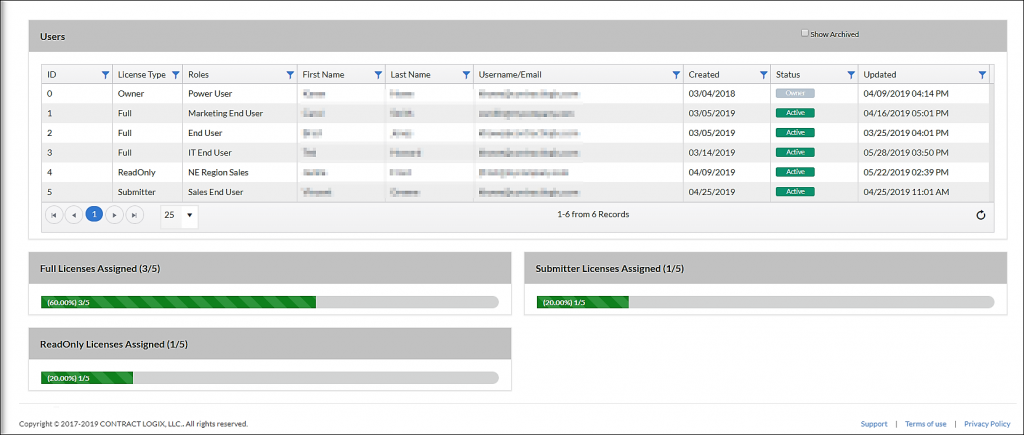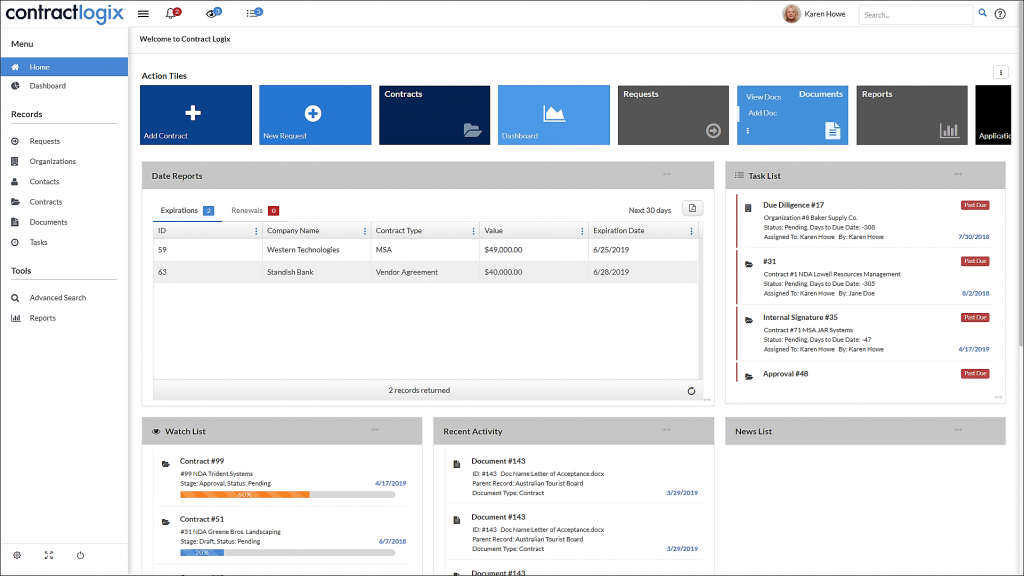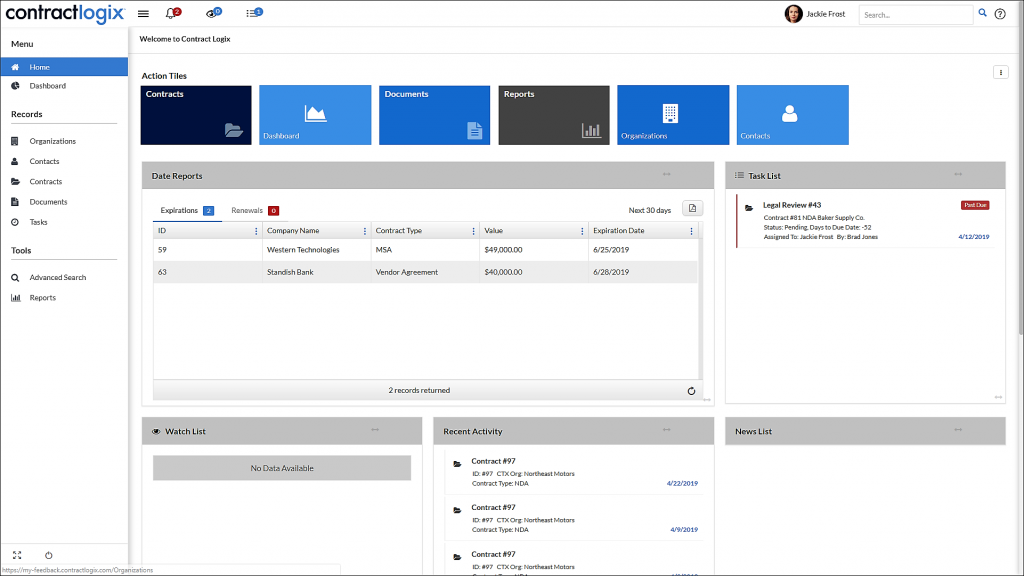A Contract Management Software Pricing Model that Makes Sense to Your Budget and Users
By Karen Howe, Director of Training, Contract Logix
Just as people have different responsibilities within your organization, users also have different needs and expectations when it comes to interacting with contract management software. One way software vendors should accommodate these differences is by offering various user subscription types. That’s why at Contract Logix we’ve created a contract management software pricing model that offers three different user subscription types – Full, Read Only, and Submitter. You would expect there to be a dollar-and-cents difference between a “full” software subscription and one that’s restricted in some way, and that’s certainly a big factor. But perhaps just as important is the impact licensing has on the user experience.
Download our eBook Top 10 Best Practices for Contract Management to learn more.
Imagine for a moment that you work for a mid- to large-sized company that has just purchased a new contract management system and you’re in charge of getting it up and running. Who is going to be using it? Your list probably includes one or more of the following – contract managers, paralegals, attorneys, IT, administrative or other staff from the field offices, and top-level executives.

Full User Subscription
The contracting staff (contract managers, administrators or coordinators, etc.) will most likely be in the system every day, fielding questions about contracts in progress, setting up new or uploading existing contracts, and monitoring contracts for expirations and renewals. These heavy users need access to the full range of features, and thus require a Full User subscription. So will your IT staff, who may be responsible for setting up and maintaining new user logins and access rights. And your Legal staff (attorneys and paralegals) may want the ease of drafting contracts and redlining agreements directly in the system. The common denominator here is their need to perform functions that involve changing data in the system.

Read-Only Subscription
But other users may not need that level of access. Department administrators might only need to log in to look up a contract or run a report. And top-level executives might only be interested in the visibility into overall performance they can get from Dashboards. None of these types of users need to alter anything – they only need to look, and so a Read Only subscription is a good option, for you and for them. For you, it undoubtedly means reduced licensing fees and less to worry about (they can’t do any harm!). For them, it means fewer new things to learn and lessens the fear of making mistakes. Their Read Only subscription automatically provides them with functionality appropriate to the tasks they perform.

Submitter Subscription
And then there’s a completely different set of users who don’t really need to interact with the central contract repository at all, except in very limited capacity. These are people who want to submit existing contracts to the repository or request the creation of new contracts. For example, this could be someone in Marketing who frequently needs to submit requests for MSAs to add new marketing vendors. Or, it could be someone in Procurement who submits third-party agreements to legal for review. Regardless, a Submitter subscription gives them access to user-friendly request forms and by default provides a vastly simplified user interface. You can stop using email, voicemail and verbal communications to make contract requests, and rely on the system, with little or no investment in training. In addition, the use of standardized request/submitter forms are easily tailored to your business needs which saves time and increases the accuracy of your data.

Takeaway
While a segment of your user base will certainly benefit from the range of features a full subscription provides, other users don’t need all the bells and whistles. Having a contract management software pricing model that provides several subscription types at different price points makes a lot of financial sense since you can match subscription types with your users’ needs. It also helps facilitate adoption of the software because it’s easier to use by those that don’t need to be experts on it.
Want to learn more? Schedule a live demo of our platform.


